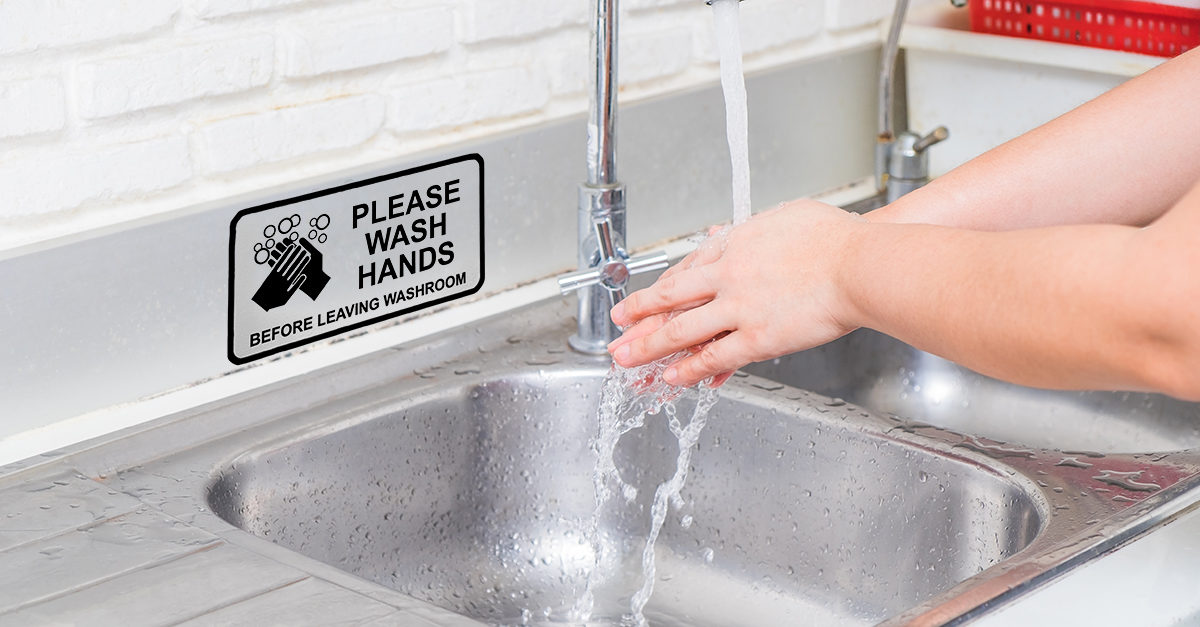The COVID-19 pandemic shed a brighter light on the already existing problem of disease prevention. Specifically, it highlighted what a significant role a seemingly insignificant action—handwashing—could have in the prevention and spread of serious illnesses.
According to the U.S. Centers for Disease Control and Prevention (CDC), good hand hygiene can prevent one out of three diarrheal illnesses and one out of five respiratory infections, such as the cold or flu.
Facility managers can use the promotion of good hand hygiene to help reduce the occurrence of similar illnesses in the buildings they serve. Here are some ways to encourage better hand hygiene within your building.
Hand hygiene education
Education on hand hygiene plays a critical role in disease prevention. According to the CDC, hand hygiene education within a community can reduce the number of people with diarrhea by as much as 40%, illness in people with weakened immune systems by 58%, and illnesses, such as colds, in the general population by as much as 21%.
Here are a few ways to educate your building’s occupants on hand hygiene:
- Post signs by restroom sinks with reminders to not only wash one’s hands but also with instructions on how to wash one’s hands. Note that how to wash is just as important as when to wash.
- Regularly send building occupants emails with memorable visuals as reminders of good hand hygiene.
- Present an in-house training session on promoting good health, with an emphasis on hand hygiene, to building occupants.
The CDC has a number of promotional materials that facility managers can use to create various printed materials, such as posters and fact sheets, as well as videos and campaigns to further communicate the message of good hand hygiene.
Global Handwashing Day is celebrated each year on October 15. According to the Global Handwashing Partnership, this year’s theme is “Unite for Universal Hand Hygiene.” Global Handwashing Day provides the perfect time and “excuse” to break out materials on good hand hygiene. You can hand out or email fact sheets, promote the day on social media, and hang up banners to commemorate the day.
Restroom status
Do the restrooms throughout your facility encourage good hand hygiene habits? It’s difficult to motivate others to commit to good hand hygiene practices if they don’t have the right tools to do so.
Restrooms should always be fully operational and stocked with soap, paper towels, and everything else occupants need to practice good hand hygiene. Ensure that:
- All soap dispensers are consistently filled and in good working condition.
- All faucets operate correctly, with hot and cold running water, and all sinks drain efficiently.
- All paper towel dispensers are working and are filled with towels on a regular basis.
- All hand dryers are in good working condition.
Key placement of hand sanitizer
While soap and water are usually best, there will be times when an occupant might not be able to get to a sink. But strategic placement of hand sanitizer can substitute when handwashing isn’t convenient or possible.
According to the CDC, hand sanitizer must contain at least 60% alcohol to be effective. So be sure to check the label first before investing. Also make sure that it contains no methanol, which can cause serious health problems.
Keep in mind that while hand sanitizers can reduce a number of germs in some situations, it’s not right for all situations, especially in terms of removing noroviruses and chemicals, such as pesticides and heavy metals like lead.




